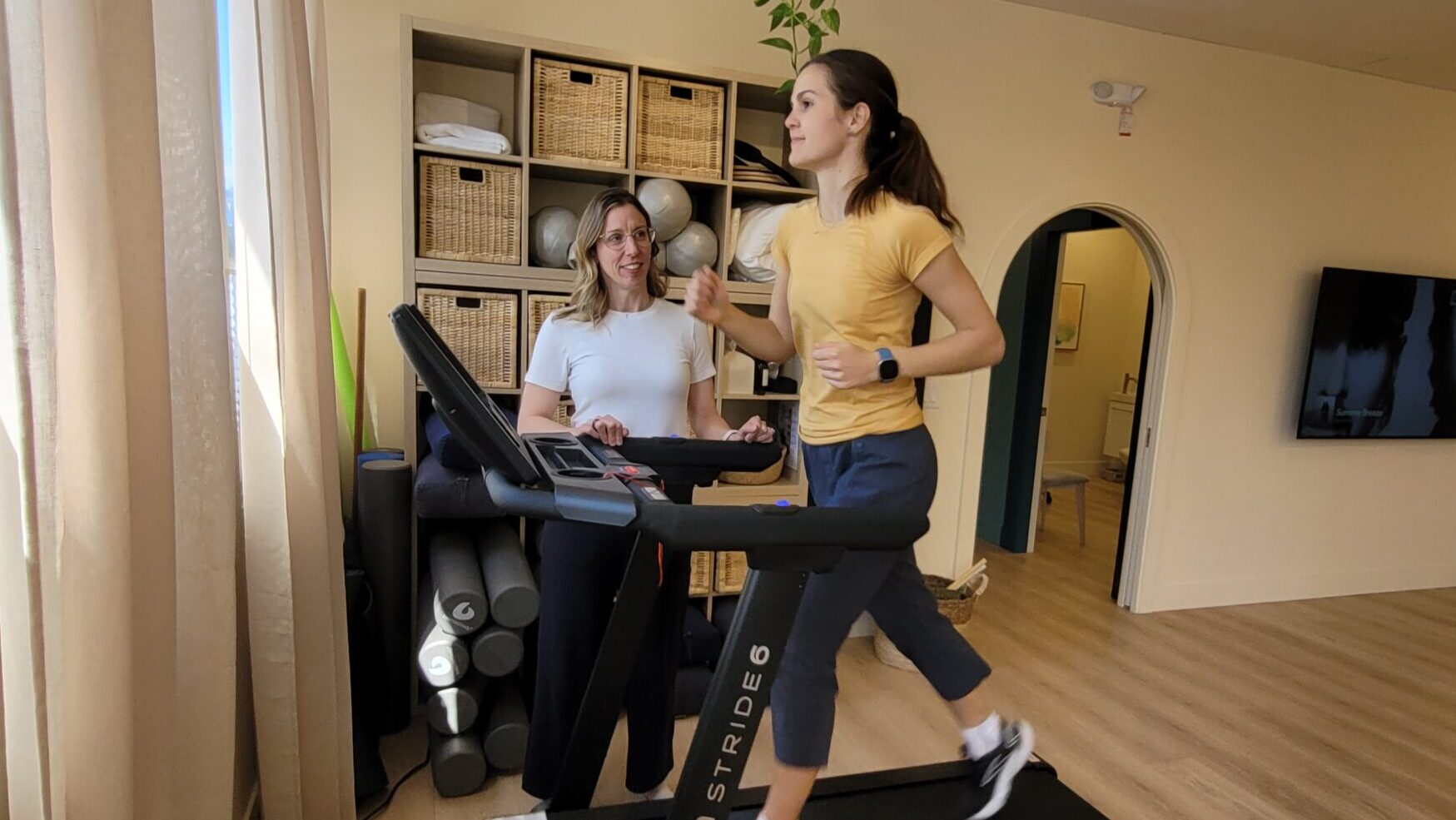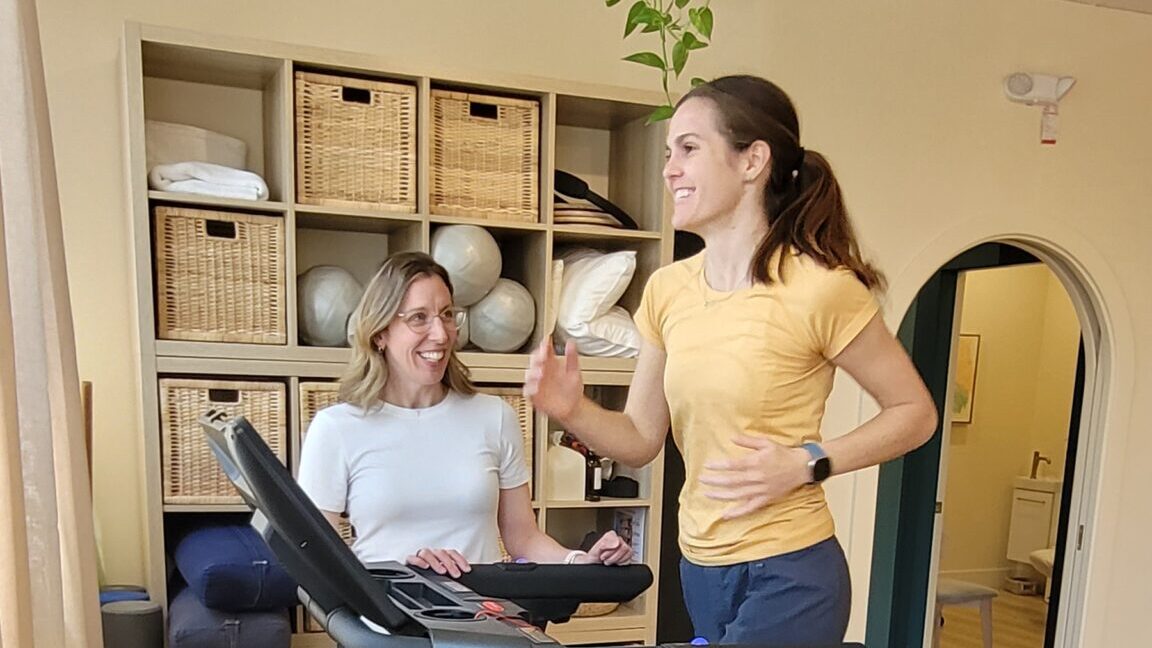The pelvic floor is a running muscle
May 2, 2025
Your pelvic floor plays a vital role in how you run, and when done with proper technique, running can also strengthen and support your pelvic floor muscles. Unfortunately, most runners haven’t been taught about this relationship and why it matters. We want to change that!
This blog post is all about the connection between pelvic health and running, and will explore:
- What your pelvic floor muscles do (and how they support you) as you run
- Why some folks experience pelvic symptoms like leaking, pain, or pressure when running
- How pelvic health physio can help you with these symptoms and your running technique
And for those based in Vancouver, we’re also hosting a workshop at the clinic all about running and the pelvic floor on June 7th. Delivered by our run-loving pelvic floor physios Sam and Trish, we’ll be sharing knowledge and practical tips as well as personal attention in a small group setting to help you apply your learning. Register through the Jane App here

A Supporting Role: What Your Pelvic Floor Muscles Do When You Run
Structurally, the pelvic floor muscles support the bladder, the bowel, and (for folks who have one) the uterus, and when you run, they also work like a shock absorber. Picture a (gentle!) trampoline in action: when your foot lands on the ground, it absorbs some of the impact of your downward motion, but there’s still some momentum going through your body.
Ideally, the pelvic floor muscles will automatically engage and respond to this motion and momentum, gently bouncing up and down to protect the important organs it supports. But for your pelvic floor “trampoline” to do its job well, it needs to be strong, dynamic, coordinated, and not too tight!!
Learning to run with the right technique can help you build and maintain the strength and coordination your pelvic floor muscles need to support your body properly.
Pelvic Symptoms and Running
Running requires a lot of work from the pelvic floor, so it can activate or exacerbate certain pelvic health symptoms, especially if there are underlying or pre-existing issues.
Common symptoms while running include:
- Leaking (stress incontinence)
- Urinary urgency (the feeling of needing to pee)
- Pelvic heaviness, pressure, or pain
While muscle weakness and certain conditions can contribute to these symptoms, you might be surprised to learn that they’re not always the culprit. Too much tightness or not enough coordination can also lead to symptoms, even if the pelvic floor muscles are quite strong.
If you think back to the pelvic floor “trampoline,” this also explains why squeezing your pelvic floor muscles throughout a run might not be an effective strategy to prevent leaks: if they’re too tense, they might not be able to contract in the way they need to to control the flow of urine – because they’re already clenched.
One common worry that we want to address here: many folks assume that if they’re leaking while running, they’re doing damage to their body, and they need to stop running. This might not necessarily be the case, and you may not even have to stop running (unless the leaking is really bothering you).
Leaking is usually just your body’s way of signalling that it needs a bit of extra support, whether because your pelvic floor muscles are getting fatigued at a certain point in your run, or because your technique could use some improvement to support your body better as it moves.

How Pelvic Health Physiotherapy Can Help
The good news is that pelvic health physiotherapy can make a big difference in helping you run confidently, comfortably, and in a way that feels good in your body.
Often, symptoms like the ones we mentioned above can be addressed by improving things like:
- Posture
- Breathing technique
- The strength or tension of other muscle groups
The following things can also impact how your pelvic floor responds to running:
- Running gait
- Running cadence
- The hardness and evenness of the terrain you run on
Of course, everyone has different goals and habits when it comes to running, so there’s no one-size-fits-all checklist. But working with a pelvic health physio can help you evaluate your current technique, address symptoms, and support your pelvic floor better while running. If you’re a new client, get matched with a physiotherapist here. If you’re a current client, book your personalized pelvic health session here.
As we mentioned earlier in the post, we’ll also be hosting a small-group workshop in the clinic on June 07, called Pelvic Floor 101 for Runners. It’s designed to help you understand the connection between pelvic health and running, with practical tools you can take to the trail, track, or treadmill. Sign up here—spaces are limited!